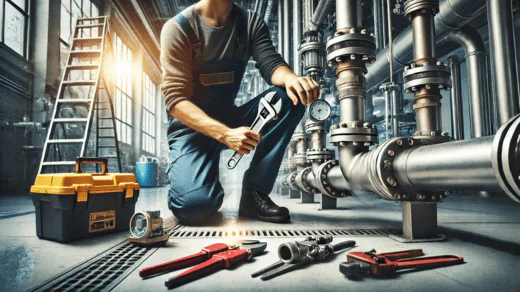Understanding Backflow Repair and Inspection: Why It’s Crucial for Your Business

Backflow is a plumbing issue that most business owners don’t think about until it’s too late. Yet, understanding how backflow works and the importance of regular backflow repair and inspection can save your business from significant risks, including contamination of your water supply.
What is Backflow?
At its core, backflow is the unwanted reversal of the water flow in your plumbing system, which can bring contaminated water into your clean water lines. It occurs when the pressure in your water system drops suddenly, allowing dirty water from sources like sewage or chemicals to flow back into the clean water supply. This can pose serious health risks to employees, customers, and anyone using the water in your building.
How Does Backflow Happen?
Typically, clean water travels through your plumbing system to various faucets, toilets, and appliances. However, backflow can occur when there’s a change in pressure, either due to a burst pipe, water main break, or high water usage nearby. This drop in pressure can cause the polluted water from areas like sewer systems or even hazardous materials to flow backward into the potable water supply.
That’s where a backflow preventer comes in. This device helps ensure that once the clean water enters your system, it doesn’t flow back into the public water supply. But, like any piece of equipment, backflow preventers can fail over time, which is why routine inspections are so important.
Why Regular Backflow Inspections Matter
Backflow preventers have mechanical parts that can wear out or fail. If your device isn’t working properly, contaminants can enter your clean water, potentially causing a public health crisis. For this reason, annual backflow inspection is required by law in many areas across Pennsylvania, New Jersey, and Delaware.
A professional backflow inspection checks the valves and devices that control water flow. The technician ensures that the backflow preventer is functioning as it should, preventing any cross-contamination of your water supply. This inspection should be performed every year, allowing you to address any issues before they become critical.
The Importance of Professional Backflow Services
While it might be tempting to skip inspections or attempt DIY repairs, backflow prevention is highly regulated and requires a certified professional. Proper installation and maintenance of a backflow preventer are crucial to ensuring that your system remains compliant with local laws and that your water supply stays safe.
A trained backflow technician not only inspects and repairs the backflow preventer but also provides valuable insight into the overall health of your plumbing system. This proactive approach can save you from costly repairs and help maintain a safe environment for everyone in your building.
How to Maintain Your Backflow System
In addition to annual inspections, there are a few simple ways to ensure your backflow preventer stays in good working condition:
- Know your system:Understand where your backflow preventer is located and how it works within your plumbing system.
- Be mindful of external factors:Landscaping and changes to your building’s plumbing infrastructure can impact the effectiveness of the backflow preventer. Always consult with a professional if making any changes.
- Stay proactive:Address any plumbing issues as soon as they arise to avoid future complications with your backflow system.
For businesses, regular backflow repair and inspection isn’t just about following the law—it’s about ensuring the safety and well-being of everyone who relies on your water. Keeping your water system in good working order not only helps avoid health risks but also avoids costly emergencies and legal penalties.
Learn more aboutbackflow repair and inspectionto make sure your business stays compliant and your water supply remains clean.





